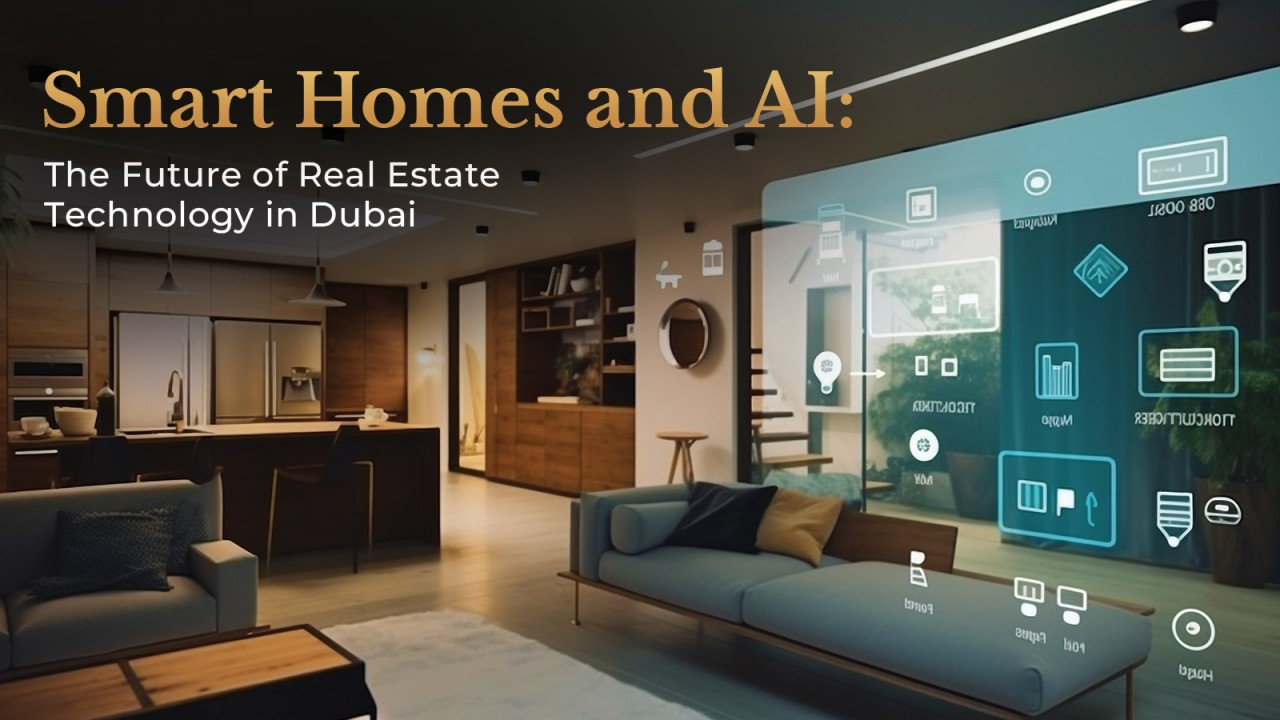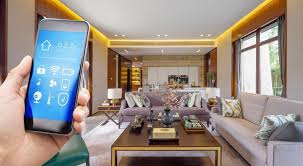Now Reading: The Rise of Smart Homes in UAE: How Technology is Shaping the Real Estate Market
-
01
The Rise of Smart Homes in UAE: How Technology is Shaping the Real Estate Market
The Rise of Smart Homes in UAE: How Technology is Shaping the Real Estate Market

Table of Contents
The Rise of Smart Homes in UAE: In an era defined by digital transformation, smart home integration has emerged as a revolutionary advancement that is reshaping the way people interact with their living spaces. No longer a concept confined to science fiction, smart homes are now a rapidly growing trend, incorporating interconnected devices and systems to enhance convenience, energy efficiency, security, and overall quality of life. This article explores the concept of smart home integration, its components, benefits, challenges, and future outlook.
What is Smart Home Integration?
Smart home integration refers to the process of connecting various home devices and appliances into a unified system that can be controlled and automated through a single interface—typically a smartphone app, voice assistant, or central control hub. These devices, which include thermostats, lighting systems, security cameras, door locks, entertainment systems, and more, communicate over the Internet of Things (IoT) using wireless protocols like Wi-Fi, Zigbee, Z-Wave, or Bluetooth.
The goal of smart home integration is to create a seamless, user-friendly environment where all components work harmoniously, providing users with centralized control, remote access, and automation capabilities.
Key Components of a Smart Home
A truly integrated smart home comprises several core components:
1. Smart Hubs and Controllers
These act as the brain of the smart home, allowing devices from different manufacturers to communicate with each other. Popular examples include Amazon Echo, Google Nest Hub, and Samsung SmartThings. They support voice commands and act as control centers.
2. Smart Lighting
Smart lighting systems like Philips Hue or LIFX enable users to adjust brightness, color temperature, and on/off schedules remotely. They can also be integrated with motion sensors to enhance energy efficiency and security.
3. Smart Thermostats
Devices such as the Nest Thermostat or Ecobee allow homeowners to automate and remotely manage indoor temperatures. These thermostats learn user preferences over time and can significantly reduce energy consumption.
4. Security and Surveillance Systems
Smart doorbells (e.g., Ring), cameras (e.g., Arlo), and smart locks (e.g., August) offer real-time monitoring and remote access. These devices can alert users of unusual activity and provide video footage through cloud services.
5. Smart Appliances
From refrigerators to washing machines, many household appliances now feature Wi-Fi connectivity and app control. Brands like LG, Samsung, and Whirlpool offer smart appliances that can notify users about maintenance needs or optimize energy use.
6. Entertainment Systems
Smart TVs, streaming devices, and speakers (like Sonos or Roku) can be synced with other home systems for immersive experiences, including automated lighting scenes or voice-controlled playback.
Benefits of Smart Home Integration
1. Convenience and Comfort
One of the most significant advantages is the convenience it offers. With automation and centralized control, users can create routines (e.g., “Good Morning” scenes that turn on lights, start the coffee maker, and adjust the thermostat) and control everything with a tap or voice command.
2. Energy Efficiency
Smart homes can drastically reduce energy usage. Smart thermostats, lighting, and appliances optimize energy consumption based on real-time data and user habits, leading to lower utility bills and a smaller carbon footprint.
3. Enhanced Security
With integrated security systems, homeowners can monitor their properties remotely, receive alerts, and take immediate action in case of intrusions. Smart locks also allow for keyless entry and tracking of who enters and exits the home.
4. Remote Access
Whether you’re at work or on vacation, smart home systems allow you to monitor and control your home from anywhere in the world via mobile apps. Forgot to lock the door or turn off the lights? You can do it remotely in seconds.
5. Accessibility
For individuals with disabilities or elderly residents, smart home integration can improve quality of life by providing easier access to home functions and emergency support systems.
Challenges of Smart Home Integration

Despite its many advantages, smart home integration is not without its challenges:
1. Compatibility Issues
With a wide range of devices from different manufacturers, achieving full interoperability can be challenging. Not all devices work seamlessly together, requiring careful product selection and often a centralized hub to bridge communication gaps.
2. Privacy and Security Risks
Smart homes collect vast amounts of personal data, making them potential targets for cyberattacks. Insecure devices or weak Wi-Fi networks can be exploited, compromising user privacy and safety.
3. Cost of Implementation
The initial cost of setting up a smart home can be high, especially when integrating high-end devices. While long-term savings are possible, the upfront investment may deter some homeowners.
4. Learning Curve
Users may need time to learn how to manage and troubleshoot their systems effectively. Complexity can increase as more devices are added, requiring some technical proficiency or professional support.
Smart Home Standards and Ecosystems
To address compatibility and integration challenges, tech companies have been working toward standardization. One of the most promising developments is Matter, a connectivity standard developed by the Connectivity Standards Alliance (CSA) with support from Apple, Google, Amazon, and others. Matter aims to provide a unified communication protocol that ensures seamless interoperability across all smart home devices, regardless of brand.
Other ecosystems such as Apple HomeKit, Google Home, and Amazon Alexa offer their own standards and APIs, encouraging developers to build devices that integrate smoothly within their platforms.
Future Outlook

The future of smart home integration is poised to become even more advanced and intuitive. Key trends shaping the future include:
1. AI and Machine Learning
With AI, smart homes will become more predictive and adaptive, learning user preferences and adjusting settings automatically. For instance, lights may dim automatically based on the time of day and your usual routines.
2. Edge Computing
Instead of relying on cloud servers, devices will process data locally (on the “edge”), increasing speed, enhancing privacy, and reducing latency.
3. Sustainability Focus
Next-generation smart homes will prioritize eco-friendliness, integrating renewable energy sources like solar panels with intelligent energy management systems.
4. Voice and Gesture Control
Beyond touch and voice, gesture-based control and biometric authentication (such as facial recognition) will enhance user interaction and security.
5. Integration with Smart Cities
Smart homes will increasingly interface with broader smart city infrastructures, participating in energy grids, traffic control, and urban planning systems.
Conclusion
Smart home integration is transforming modern living by combining technology with daily life to deliver greater convenience, efficiency, and security. While there are challenges to address—particularly around privacy, compatibility, and cost—the benefits far outweigh the drawbacks. As technology advances and standards like Matter become mainstream, the dream of a fully connected, intelligent home is not just possible—it’s inevitable.
Whether you’re a tech enthusiast or simply someone looking to improve your lifestyle, investing in a smart home system can be a meaningful step toward the future of connected living.
WATCH MORE: https://www.youtube.com/watch?v=5vs54QsAc00
READ MORE: Eco-Friendly Real Estate: UAE’s Shift Towards Sustainable Developments in 2025






















